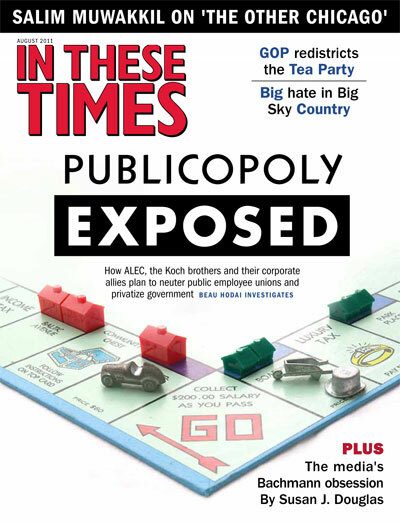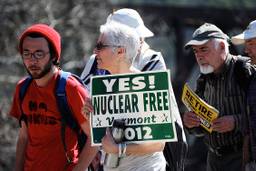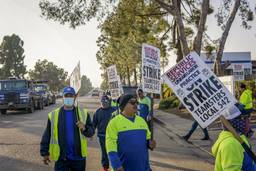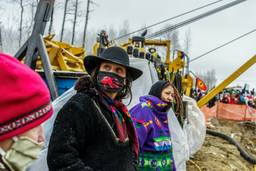After Fukushima, New Fears in U.S.
Japan’s catastrophe has raised new safety concerns about the proposed AP1000 nuclear reactor.
John Raymond
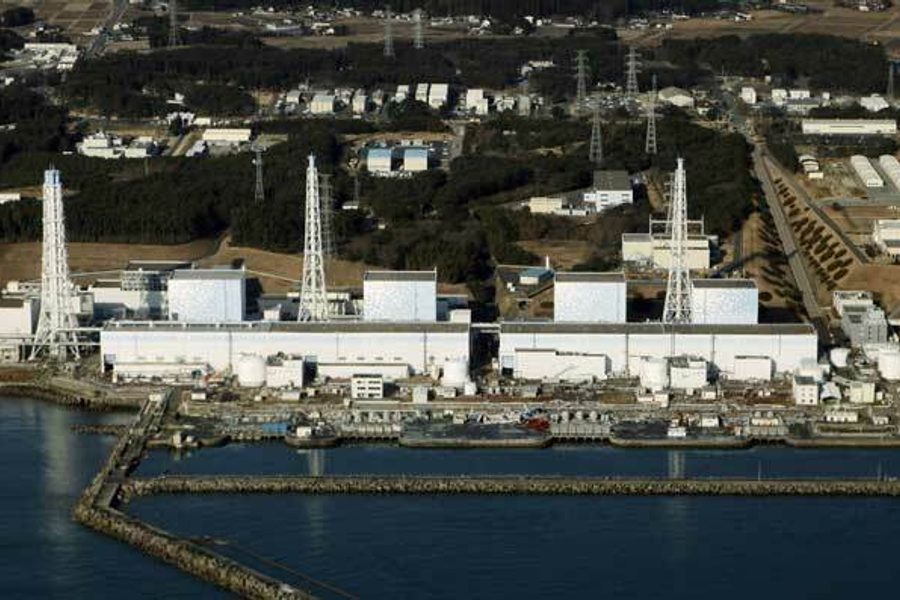
The catastrophe in Japan caused by an earthquake and tsunami on March 11 – one of the worst nuclear disasters since the advent of commercial nuclear power – has drawn attention to the David-and-Goliath struggle underway to stop federal regulators from approving a new untested nuclear reactor that critics say has clear safety design flaws. The reactor, known as the AP1000 and designed by Westinghouse-Toshiba, is proposed for 14 sites across the southeastern United States.
The full core meltdowns at three nuclear reactors at the Fukushima Daiichi nuclear plant have raised new safety concerns about the AP1000 reactor. The AP1000 Oversight Group, a coalition of environmental watchdog groups in the Southeast, filed a new legal challenge on June 16 with the Nuclear Regulatory Commission (NRC) to declare the commission’s current AP1000 review “null and void.”
The groups say the proposed design submitted for public comment does not resolve known safety design issues, does not apply lessons already learned from Fukushima, and further, that the NRC’s review process did not give the public – including outside nuclear engineers – the time needed to review and comment on the design. The public comment period, which began in late February and ended in May, was cut off after 75 days despite thousands of requests to extend it.
“The NRC’s main goal is to bulldoze this license through no matter the pending safety questions,” says Tom Clements, southeastern nuclear campaign coordinator with Friends of the Earth. He and others charge that the NRC, under industry pressure, is fast-tracking the review process to certify the reactor this year and will put off consideration of design changes needed as a result of Fukushima until a later date, after reactor construction may already be underway at some sites.
“There are profound economic and safety issues that remain. Technical experts inside and outside of the NRC have confirmed them, and there is great pressure to cover over them and move ahead,” says Jim Warren, executive director of the North Carolina Waste Awareness and Reduction Network (NC WARN) based in Durham, N.C.
Friends of the Earth, NC WARN and the AP1000 Oversight Group have submitted technical studies and expert reports with implications for the design of the AP1000 that relate to its containment structure, the strength of the shield building, emergency cooling systems and the high-density spent fuel pools proposed in Westinghouse’s design.
“[It] is imperative that the NRC re-evaluate the new AP1000 design in light of its potential for containment failure,” says Arnie Gundersen, a former senior nuclear industry official and chief engineer of Fairewinds Associates, Inc., an independent research firm. He first brought attention to the AP1000’s flawed containment design in a report commissioned by the AP1000 Oversight Group and submitted to the NRC in April 2010. The report linked the potential for containment failure in the AP1000 to its “chimney effect” design that would release radiation into the environment following a nuclear accident.
Westinghouse disputes the entire report. Company spokesman Vaughn Gilbert told the industry journal Nuclear Engineering International, “We are certainly never surprised when an antinuclear group with an antinuclear agenda puts forth antinuclear comments.”
But Gundersen is not alone in raising safety warnings. Inside the NRC, Dr. John Ma, the lead staff engineer who analyzed the AP1000 shield building, filed a formal dissent in November against approving the design, warning that a natural disaster “would shatter the [building’s] wall as it does a glass cup.” Despite requests to release Ma’s full report, the NRC has only made a heavily redacted version available. Friends of the Earth recently filed a Freedom of Information Act request for the uncensored report.
“The NRC is a leaky vessel for hope,” said Lou Zeller of Blue Ridge Environmental Defense League, which is fighting plans to build two AP1000 power plants outside Augusta, Ga. “It will require action on the part of residents, activists, elected officials and others to prevent an aggressive company with powerful political support from riding roughshod over safety issues,” he said.

I hope you found this article important. Before you leave, I want to ask you to consider supporting our work with a donation. In These Times needs readers like you to help sustain our mission. We don’t depend on—or want—corporate advertising or deep-pocketed billionaires to fund our journalism. We’re supported by you, the reader, so we can focus on covering the issues that matter most to the progressive movement without fear or compromise.
Our work isn’t hidden behind a paywall because of people like you who support our journalism. We want to keep it that way. If you value the work we do and the movements we cover, please consider donating to In These Times.
